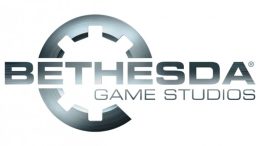Last Thursday afternoon, in response to a softball question from Salesforce CEO Marc Benioff on the subject of the relationship of Google’s proposed takeover of Motorola Mobility to the ongoing patent wars, Google Executive Chairman Eric Schmidt cleverly avoided linking the two. In fact, he suggested that Google was more impressed by the company’s phones and their engineers than with its patent portfolio. “We’re actually very excited about the product line and so forth,” Schmidt told Benioff. “To use the Motorola brand and product architecture, and the engineers and creative people – these guys invented the RAZR!”

For those who may have already forgotten, the RAZR was perhaps the last trendy, fashionable phone prior to the iPhone. Launched in 2004, it was the U.S.’ top seller for nearly three years, but that fact didn’t help Motorola very much financially. And as far as design was concerned, the product line was not without its defects. No, it’s hard to believe that RAZR engineering was the key selling point for Schmidt and Google.
But from that point in the discussion with Benioff, Schmidt hopped, skipped, and jumped onto the patent issue, Motorola notwithstanding. The chairman indirectly implied that dropping out of the bid for Nortel’s patent portfolio necessitated the takeover bid for Motorola. Although Google was criticized for bidding as much as $1 billion for the portfolio of the dissolving telecom company, Schmidt said he believed the side-effect of the winning $4.5 billion bid – assembled by a consortium including Microsoft, Apple, Research in Motion, and Sony – was to drive up the value of worthless or unsubstantiated patents. Those patents (not necessarily the Nortel set) could be used, he implied, in a licensing war with Google.
“All of a sudden, the values of all these questionable patents went up and up and up,” Schmidt told the Dreamforce conference audience.
“I, of course, suggested the correct way…”
Had the current round of patent reform legislation been signed into law, Schmidt went on, Google might not have needed to be so defensive. “I, of course, suggested that the correct way to solve the patent problem was to take all the patents as they’re published and crowd-source them. In other words, say, ‘Here’s a proposal for patent. Would everybody comment to see if there’s prior art?’ Because the people in the patent office are over-burdened. The only problem with my proposal is, it’s illegal, right?”
Well, no. Utilizing crowd-sourcing to flesh out the existence of prior art is something that can indeed be done. The only question has been, who should be responsible? Such a system would place significant burdens on the U.S. Patent Office, which is stretched and under-funded as it is. But patent applicants are not without options. Some law firms representing prospective client applicants have helped to build such a platform, in so doing helping their clients to conduct what are called Freedom to Operate searches.
“The Article One platform enables a crowd to respond to requests for research in the patent area,” eads a blog post last month from Article One Partners, one such collaborative effort. “The broad reach of the Community helps to identify any prior art or intellectual property that could be blocking a client’s product or process. One of Article One’s Community’s greatest strengths is the ability to quickly compile information from around the world that can lead to better patent-related decisions. Depending on the findings of the Study, clients could use the results to make licensing agreements that preemptively avoid lawsuits. The resulting prior art can also be used to learn more about other patents involved in the case. By learning about these patents, companies can be better able to expand their businesses and drive innovation.”
Apparently, one company that endorses the Article One platform and may have even used it, is Microsoft. Meanwhile, Eric Schmidt characterized the patent system as offering no such options, and forcing companies like Google to take other defensive measures.
“The way the patent system works,” Schmidt said, “it precisely does not allow for that kind of disclosure. So there is legislation that’s in the Senate, which we hope will pass this year, which will both fund the patent office much more and give them the rights to kick out a lot of these patents earlier. But I think that we were fortunate as a software industry that it was not an industry that was defined by patents. It was defined by creativity. With these new patent fights that are coming, I’m worried that these over-broad patents will somehow slow it down.
“A company like Google – and I want to be clear here… has the money to go and fight these wars,” he continued. “We have very, very smart patent attorneys. By the way, you all may not know, but essentially all the patent fights that are interesting are done in one district, called the East District Court of Texas. How this is possible is beyond me. Again, it just doesn’t feel quite right. Patents are important, but let’s do them in a way that’s systematic.”
Counterpoint: Crowd-sourcing is good when the crowd is behind you
That led to this rather pointed response from Dr. Richard C. Fuisz, a medical patent portfolio holder:
Google’s policy of fighting rather than settling third party patent claims is not only well known but is an ostensible source of pride for Google’s legal department and its corporate leadership. Allowing Google to set an industry agenda for patent reform that is akin to inviting the fox into the henhouse.
The Google story about so-called broad patent issuances in the late ’90s omits the reality of the intervening decade which has seen a patent office afraid to allow patents for fear of the blowback that has been famously delivered on quite a few occasions by corporate lobbyists and congressmen on behalf of contributors. After the pendulum swung entirely against issuing new patents, we have finally seen a return to a rough middle ground. It is this middle ground that Eric Schmidt would like to plough up with his offered improvements.
The “crowd-sourcing” concept is intended to sound like a neutral device to bring relevant prior art to the attention of the examiner. It is nothing of the sort. Rather, it is a mechanism whereby big companies like Google can draw a bead on a patent application and essentially lobby against its allowance. As an inventor of hundreds of patents worldwide and in my seventh decade, I know exactly what it will mean when a young patent examiner is subject to big corporate lobbying against particular patent applications. It’s going to mean the big guys win and the small guys lose.

















